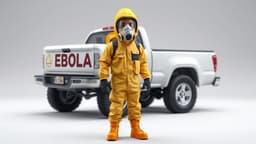Home / Health / Anal Cancer Rates Surge, Especially Among Older Women
Anal Cancer Rates Surge, Especially Among Older Women
16 Nov
Summary
- Anal cancer cases have surged 46% since 2005, mostly in women over 50
- HPV infections are the leading cause, with 88% of cases linked to the virus
- Experts urge people to get HPV vaccine and practice safe sex to lower risks

As of November 2025, leading oncologists have reported a significant surge in cases of a little-known "taboo" cancer, particularly among women. Anal cancer cases in the United States have increased by an average of 46% between 2005 and 2018, with the majority of new diagnoses occurring in women over the age of 50.
The primary driver behind this alarming trend is the human papillomavirus (HPV), a common sexually transmitted infection that can lead to cancer years or even decades later. Experts estimate that 88% of anal cancer cases are caused by HPV, with the high-risk strains 16 and 18 being the most prevalent. The virus disrupts normal cell processes and can eventually lead to the formation of cancerous tumors in the anal region.
While anal cancer was once primarily associated with gay and bisexual men, doctors are now seeing a shift in their patient demographics, with more and more women over 50 seeking treatment. This change is likely due to the long-term effects of HPV infections that occurred before the HPV vaccine was introduced in 2006. Additionally, factors such as longer life spans, increased immune suppression, and better awareness have all contributed to the rise in anal cancer cases.
To combat this growing public health concern, experts urge people to get the HPV vaccine, which can prevent up to 90% of HPV-related infections, and to practice safe sex by using condoms and reducing the number of sexual partners. Early detection is also crucial, as the five-year survival rate for stage one anal cancer is 85%, but it drops to just 36% if the cancer has spread to distant organs.


